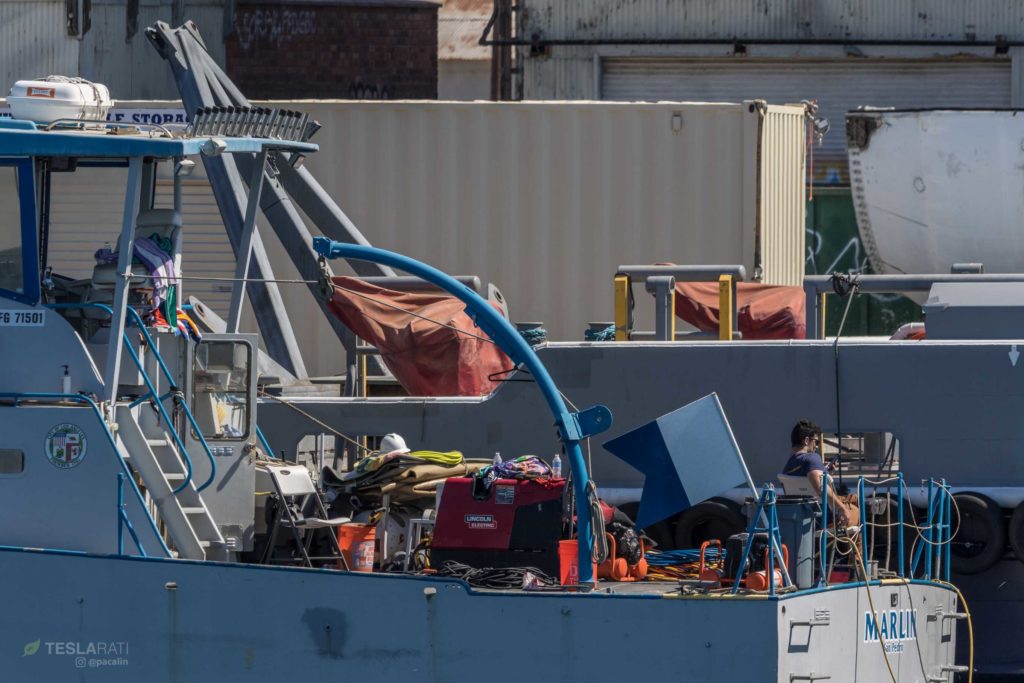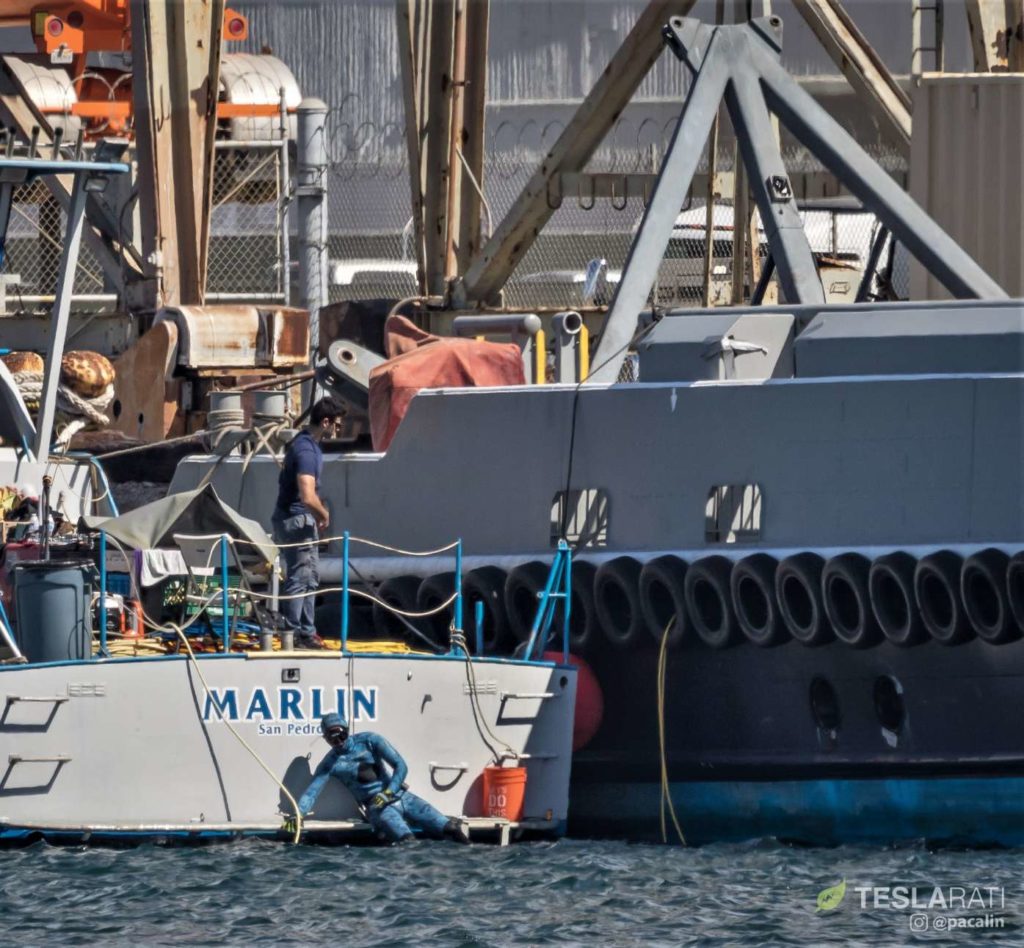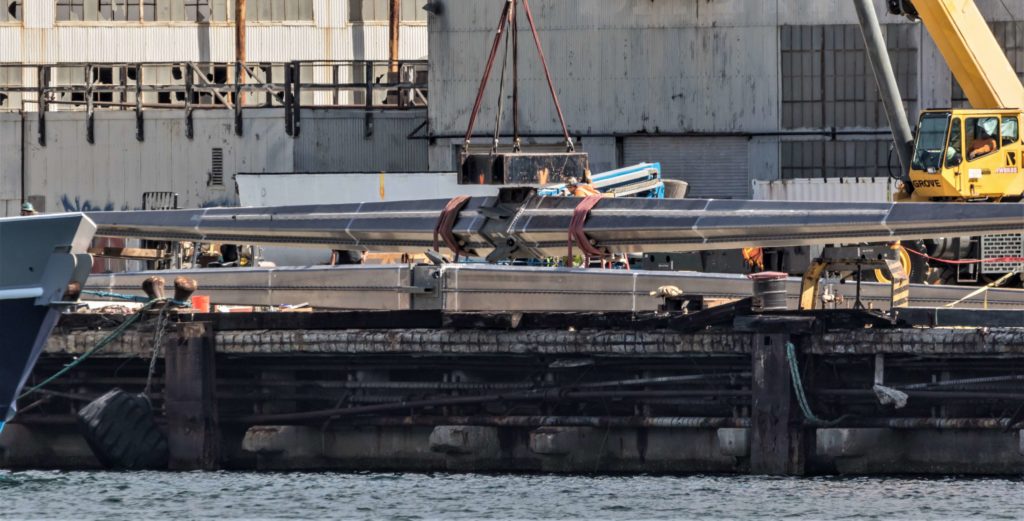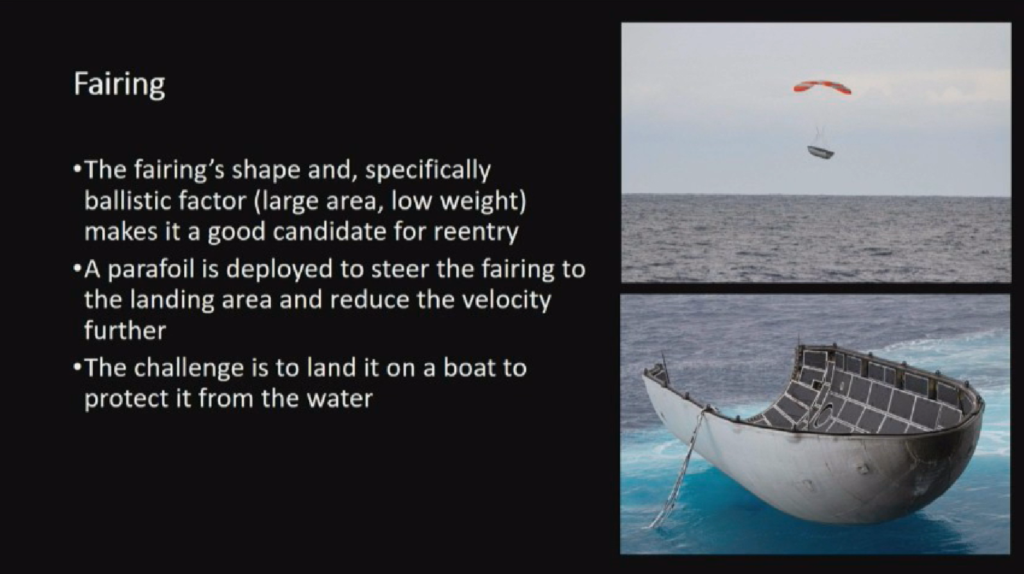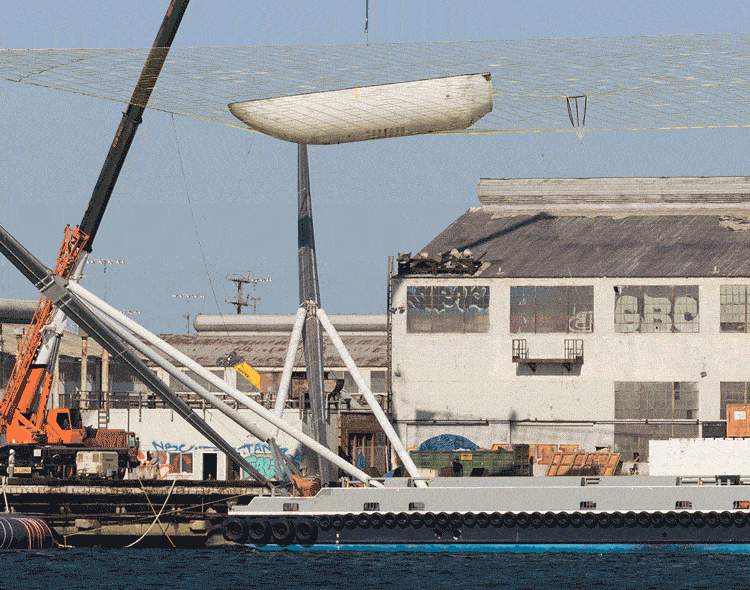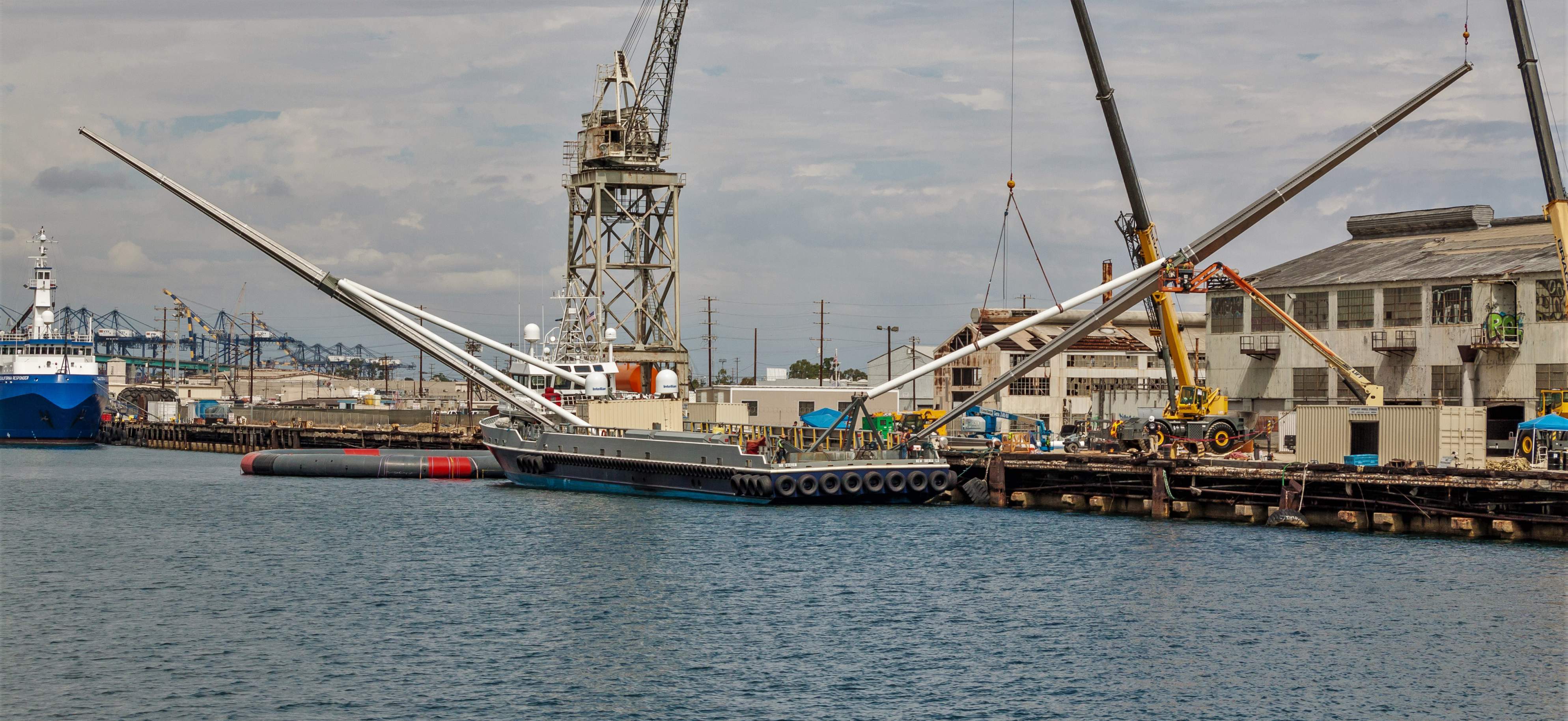

SpaceX
SpaceX reinstalls Mr Steven’s arms for Sunday Falcon 9 fairing catch
Over the course of less than half a day, SpaceX recovery technicians completed installation of three of Mr. Steven’s four fairing recovery arms, and the final arm and net are now set to be attached to the ship by the end of tomorrow, leaving plenty of time for Mr. Steven to attempt a Falcon fairing recovery this Sunday.
The reason for the delay is unclear, but SpaceX’s next launch and Mr. Steven’s next attempt at catching a Falcon fairing slipped 24 hours to 7:21 pm, October 7 (02:21 UTC, Oct. 8). Set to place Earth-observation satellite SAOCOM-1A into a low Earth orbit, this mission will mark SpaceX’s 16th reuse of Falcon 9 boosters in 18 months, as well as the operational debut of the company’s West Coast landing zone.
One of the ship’s 8 giant struts has been attached. There’s a good pace going so far. #spacex #mrsteven pic.twitter.com/8h73GoAztW
— Pauline Acalin (@w00ki33) October 3, 2018
Prior to attaching three arms and six of eight suspension booms, SpaceX’s recovery technicians spent the majority of October 1st and 2nd assembling Mr. Steven’s arms and situating them for installation, including the introduction of a new attachment jig of some sort. Likely used to safely rotate the arms into a position where traditional harnesses can then be used to lift them for installation, technicians spent several hours repeatedly picking up and setting down Mr Steven’s recovery components, swapping between the square jig and harnesses for each arm.
Additionally, a lone diver was spotted working near Mr. Steven’s stern off of a small utility boat equipped for underwater welding, presumably performing routine maintenance or repairs on the vessel’s hull and screws (propellers).
- The Marlin hovered around Mr Steven on the 1st and 2nd. (Pauline Acalin)
- A diver services Mr Steven. (Pauline Acalin)
- A curious jig used while preparing Mr Steven’s arms for installation, 10/02/18. (Pauline Acalin)
Once those various tasks were completed, SpaceX installed 3 of 4 arms over a period of roughly 8 hours on Wednesday, wrapping up around sunset after working through an unusual bout of rain in the Port of L.A. Despite having disappeared from Mr. Steven and Berth 240 for more than a month and a half, the vessel’s arms and booms appear almost entirely unchanged aside from visible shipping labels and the installation of small rings at the center of each arm, most likely a simple aid for organizing the rigging needed to operate his fairing catcher net.
In early August, SpaceX spent a day or two testing Mr. Steven’s arms and net with an actual Falcon fairing half, demonstrating just how flexible the combination can be. Along with motorized rigging, Mr. Steven can quickly and safely drop an ~800 kg fairing half onto its deck while also precisely controlling the net’s tension.
- A gif demonstrates just how taut Mr Steven’s net can be, thanks to mechanized rigging. 08/13/18 (Pauline Acalin)
Speaking on October 3rd, SpaceX VP of Build and Launch Reliability Hans Koenigsmann expressed confidence that SpaceX would be able to close the loop and begin recovering fairings soon, and confirmed that the company still plans to conduct controlled drop tests with fairings later this year while continuing to attempt to catch fairing halves after SpaceX’s Vandenberg launches. Overall, Koenigsmann was visibly excited about the successes SpaceX’s fairing recovery team have already secured.
Now targeting October 7 for launch of SAOCOM 1A. Rocket and payload are healthy; additional time will be used to complete pre-flight vehicle checkouts.
— SpaceX (@SpaceX) October 3, 2018
For prompt updates, on-the-ground perspectives, and unique glimpses of SpaceX’s rocket recovery fleet check out our brand new LaunchPad and LandingZone newsletters!
Elon Musk
Elon Musk reveals SpaceX’s target for Starship’s 10th launch
Elon Musk has revealed SpaceX’s target timeline for the next Starship launch, which will be the tenth in program history.
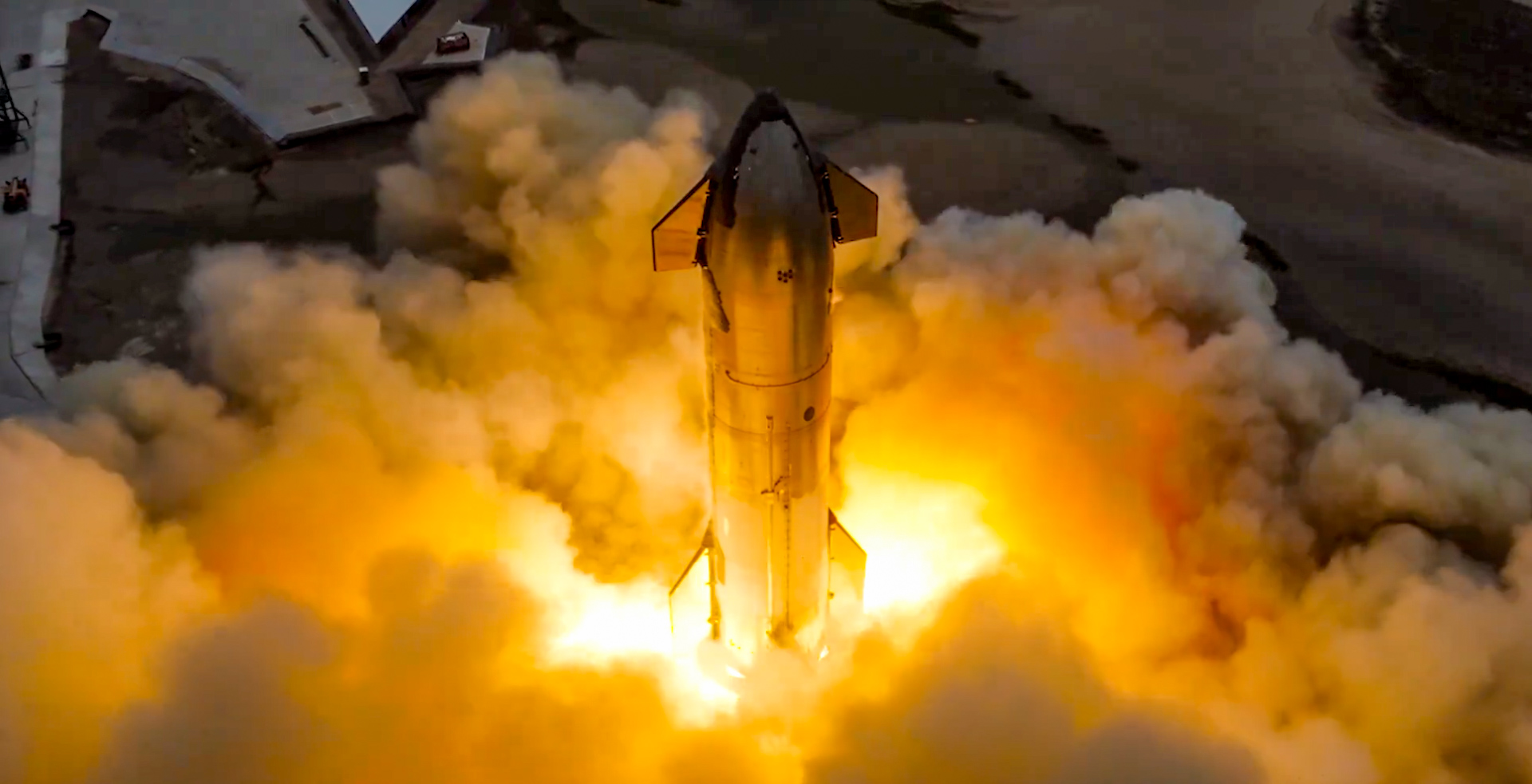
Elon Musk has revealed SpaceX’s target timeline for the next Starship launch, which will be the tenth in program history.
Musk says SpaceX is aiming for a timeline of roughly three weeks from now, which would come about ten weeks after the previous launch.
Coincidentally, it would bring the two launches 69 days apart, and if you know anything about Elon Musk, that would be an ideal timeline between two launches.
🚨 Just wanted you to know, Starship 10’s projected test flight date, according to Grok, is August 4.
Starship’s ninth test flight took place on May 27.
August 4 is 69 days after May 27.
Do with that what you will. 🚀 https://t.co/IISpT08rIy
— TESLARATI (@Teslarati) July 16, 2025
SpaceX is coming off a test flight in which it lost both the Super Heavy Booster and the Upper Stage in the previous launch. The Super Heavy Booster was lost six minutes and sixteen seconds into the flight, while SpaceX lost communication with the Ship at 46 minutes and 48 seconds.
Musk is aiming for the tenth test flight to take place in early August, he revealed on X:
Launching again in ~3 weeks
— Elon Musk (@elonmusk) July 14, 2025
This will be SpaceX’s fourth test flight of the Starship program in 2025, with each of the previous three flights bringing varying results.
IFT-7 in January brought SpaceX its second successful catch of the Super Heavy Booster in the chopstick arms of the launch tower. The ship was lost after exploding during its ascent over the Turks and Caicos Islands.
IFT-8 was on March 6, and SpaceX caught the booster once again, but the Upper Stage was once again lost.
The most recent flight, IFT-9, took place on May 27 and featured the first reused Super Heavy Booster. However, both the Booster and Upper Stage were lost.
The Federal Aviation Administration (FAA) hit SpaceX with a mishap investigation for Flight 9 on May 30.
News
SpaceX’s Crew-11 mission targets July 31 launch amid tight ISS schedule
The flight will lift off from Launch Complex 39A at Kennedy Space Center in Florida.

NASA and SpaceX are targeting July 31 for the launch of Crew-11, the next crewed mission to the International Space Station (ISS). The flight will lift off from Launch Complex 39A at Kennedy Space Center in Florida, using the Crew Dragon Endeavour and a Falcon 9 booster.
Crew Dragon Endeavour returns
Crew-11 will be the sixth flight for Endeavour, making it SpaceX’s most experienced crew vehicle to date. According to SpaceX’s director of Dragon mission management, Sarah Walker, Endeavour has already carried 18 astronauts representing eight countries since its first mission with NASA’s Bob Behnken and Doug Hurley in 2020, as noted in an MSN report.
“This Dragon spacecraft has successfully flown 18 crew members representing eight countries to space already, starting with (NASA astronauts) Bob (Behnken) and Doug (Hurley) in 2020, when it returned human spaceflight capabilities to the United States for the first time since the shuttle retired in July of 2011,” Walker said.
For this mission, Endeavour will debut SpaceX’s upgraded drogue 3.1 parachutes, designed to further enhance reentry safety. The parachutes are part of SpaceX’s ongoing improvements to its human-rated spacecraft, and Crew-11 will serve as their first operational test.
The Falcon 9 booster supporting this launch is core B1094, which has launched in two previous Starlink missions, as well as the private Ax-4 mission on June 25, as noted in a Space.com report.
The four-members of Crew-11 are NASA astronauts Zena Cardman and Mike Fincke, as well as Japan’s Kimiya Yui and Russia’s Oleg Platonov.
Tight launch timing
Crew-11 is slated to arrive at the ISS just as NASA coordinates a sequence of missions, including the departure of Crew-10 and the arrival of SpaceX’s CRS-33 mission. NASA’s Bill Spetch emphasized the need for careful planning amid limited launch resources, noting the importance of maintaining station altitude and resupply cadence.
“Providing multiple methods for us to maintain the station altitude is critically important as we continue to operate and get the most use out of our limited launch resources that we do have. We’re really looking forward to demonstrating that capability with (CRS-33) showing up after we get through the Crew-11 and Crew-10 handover,” Spetch stated.
News
SpaceX launches Ax-4 mission to the ISS with international crew
The SpaceX Falcon 9 launched Axiom’s Ax-4 mission to ISS. Ax-4 crew will conduct 60+ science experiments during a 14-day stay on the ISS.
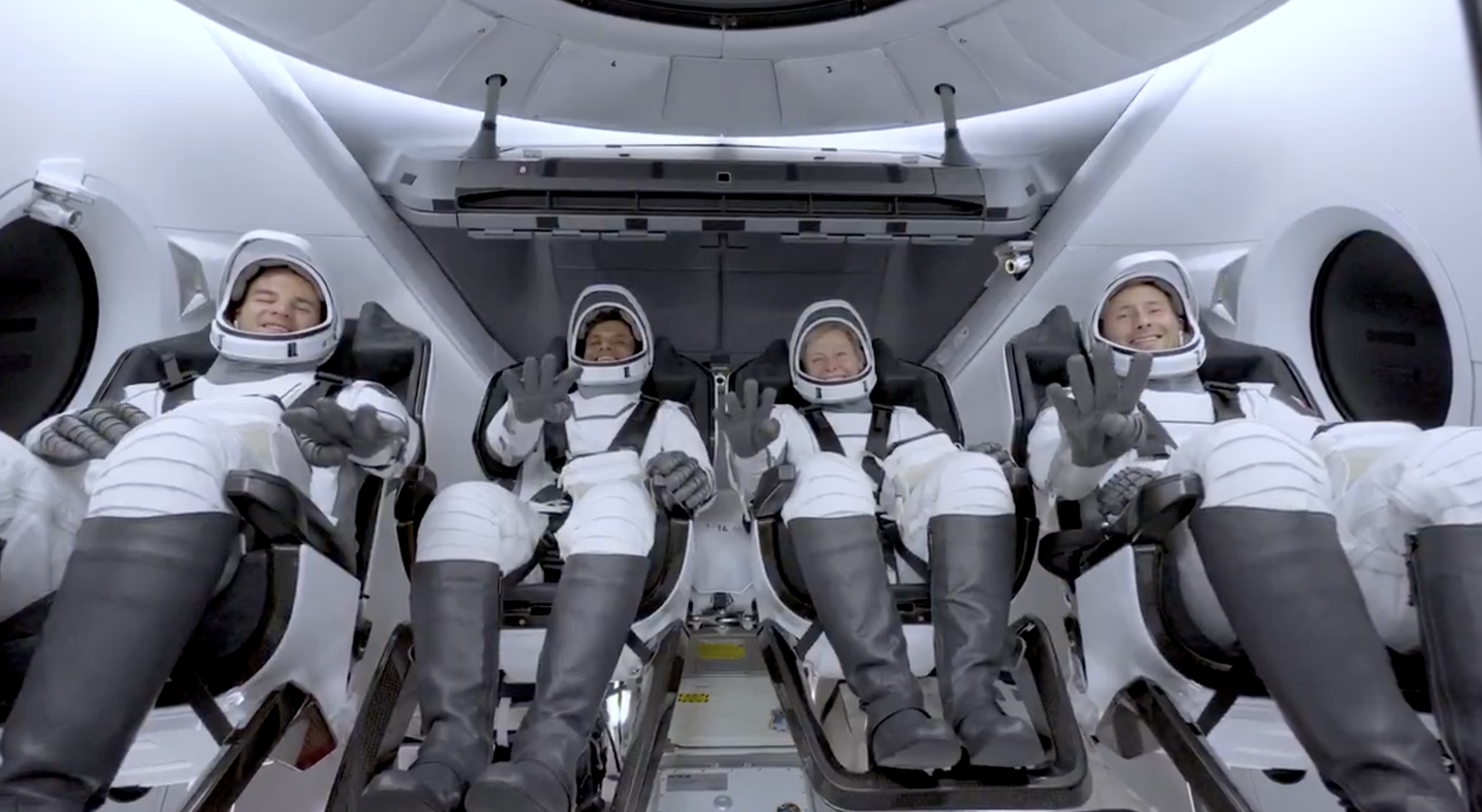
SpaceX launched the Falcon 9 rocket kickstarting Axiom Space’s Ax-4 mission to the International Space Station (ISS). Axiom’s Ax-4 mission is led by a historic international crew and lifted off from Kennedy Space Center’s Launch Complex 39A at 2:31 a.m. ET on June 25, 2025.
The Ax-4 crew is set to dock with the ISS around 7 a.m. ET on Thursday, June 26, 2025. Axiom Space, a Houston-based commercial space company, coordinated the mission with SpaceX for transportation and NASA for ISS access, with support from the European Space Agency and the astronauts’ governments.
The Ax-4 mission marks a milestone in global space collaboration. The Ax-4 crew, commanded by U.S. astronaut Peggy Whitson, includes Shubhanshu Shukla from India as the pilot, alongside mission specialists Sławosz Uznański-Wiśniewski from Poland and Tibor Kapu from Hungary.
“The trip marks the return to human spaceflight for those countries — their first government-sponsored flights in more than 40 years,” Axiom noted.
Shukla’s participation aligns with India’s Gaganyaan program planned for 2027. He is the first Indian astronaut to visit the ISS since Rakesh Sharma in 1984.
Axiom’s Ax-4 mission marks SpaceX’s 18th human spaceflight. The mission employs a Crew Dragon capsule atop a Falcon 9 rocket, designed with a launch escape system and “two-fault tolerant” for enhanced safety. The Axiom mission faced a few delays due to weather, a Falcon 9 leak, and an ISS Zvezda module leak investigation by NASA and Roscosmos before the recent successful launch.
As the crew prepares to execute its scientific objectives, SpaceX’s Ax-4 mission paves the way for a new era of inclusive space research, inspiring future generations and solidifying collaborative ties in the cosmos. During the Ax-4 crew’s 14-day stay in the ISS, the astronauts will conduct nearly 60 experiments.
“We’ll be conducting research that spans biology, material, and physical sciences as well as technology demonstrations,” said Whitson. “We’ll also be engaging with students around the world, sharing our experience and inspiring the next generation of explorers.”
SpaceX’s Ax-4 mission highlights Axiom’s role in advancing commercial spaceflight and fostering international partnerships. The mission strengthens global space exploration efforts by enabling historic spaceflight returns for India, Poland, and Hungary.
-

 Elon Musk1 day ago
Elon Musk1 day agoWaymo responds to Tesla’s Robotaxi expansion in Austin with bold statement
-

 News1 day ago
News1 day agoTesla exec hints at useful and potentially killer Model Y L feature
-

 Elon Musk2 days ago
Elon Musk2 days agoElon Musk reveals SpaceX’s target for Starship’s 10th launch
-

 Elon Musk3 days ago
Elon Musk3 days agoTesla ups Robotaxi fare price to another comical figure with service area expansion
-

 News1 day ago
News1 day agoTesla’s longer Model Y did not scale back requests for this vehicle type from fans
-

 News1 day ago
News1 day ago“Worthy of respect:” Six-seat Model Y L acknowledged by Tesla China’s biggest rivals
-

 News2 days ago
News2 days agoFirst glimpse of Tesla Model Y with six seats and extended wheelbase
-

 Elon Musk2 days ago
Elon Musk2 days agoElon Musk confirms Tesla is already rolling out a new feature for in-car Grok

